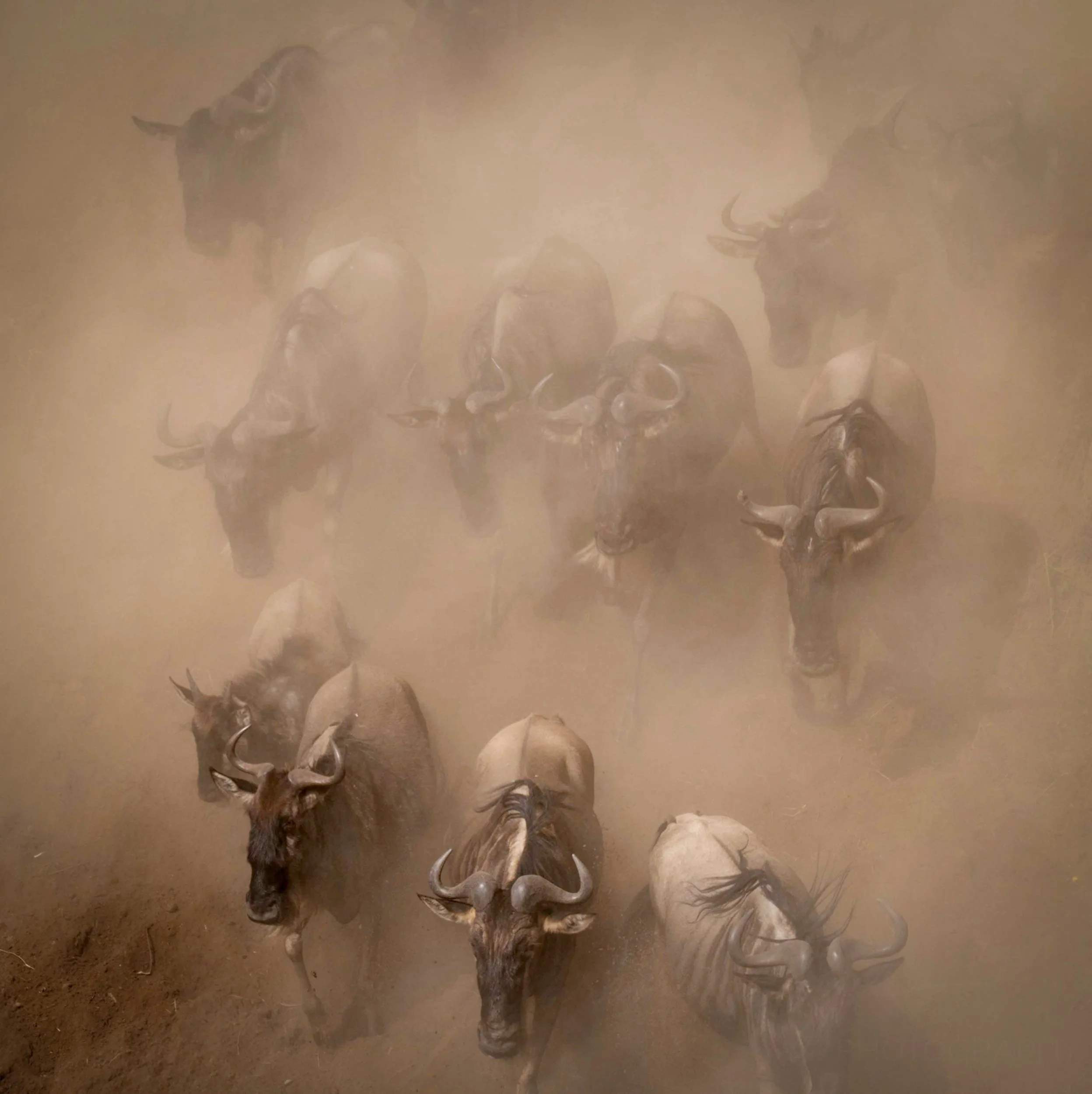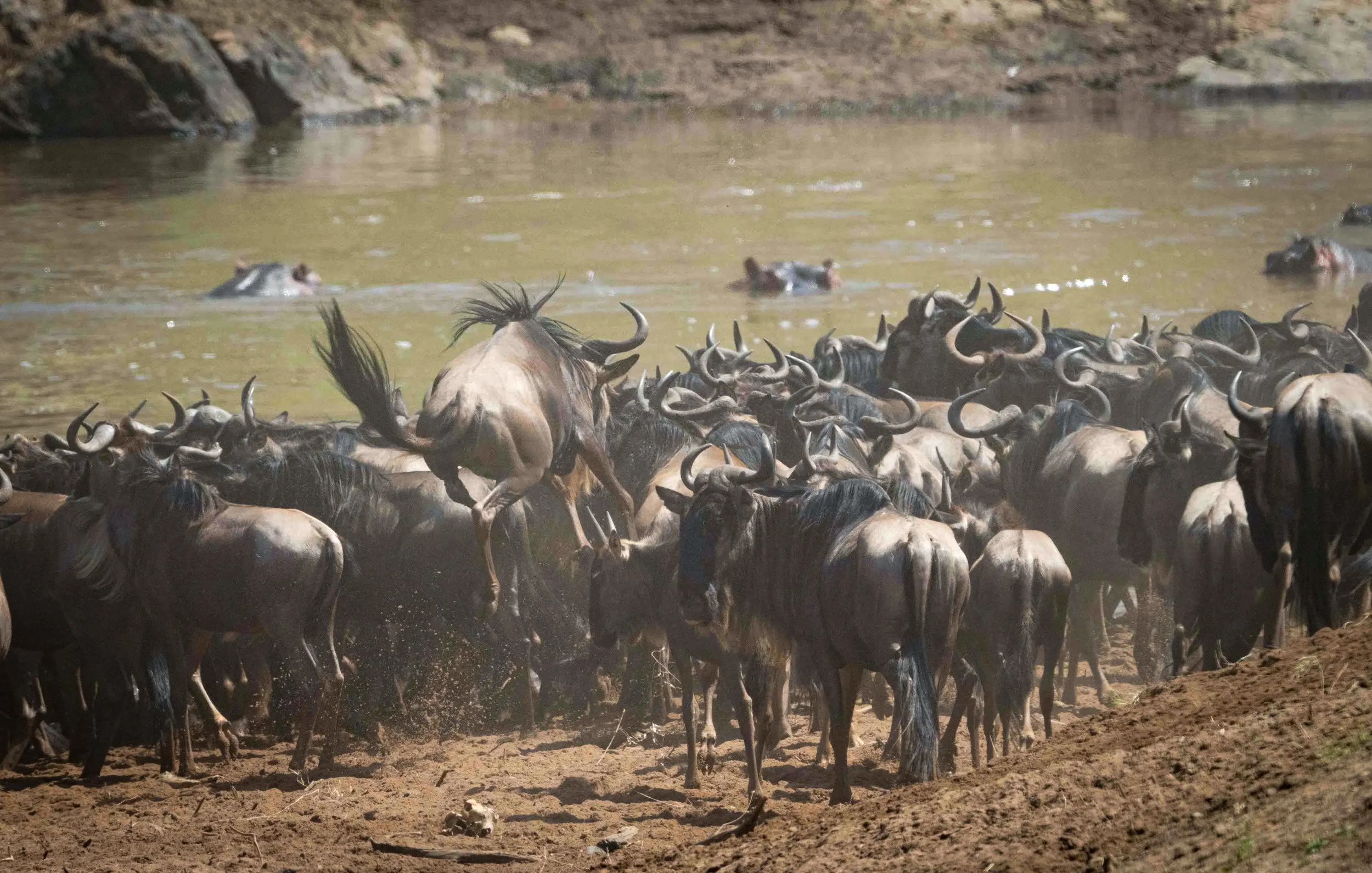Migration Marvel
The Great Migration of Wildebeests in Kenya - An Unforgettable Journey
Visiting Kenya to witness the wildebeest migration was an awe-inspiring experience. The rarity and power of seeing the wildebeest river crossing left an unforgettable mark on me. With climate change making the rainy seasons in Tanzania and Kenya unpredictable, we were incredibly fortunate to witness the river crossing twice in one day. We awoke before dawn and floated above thousands wildebeests migrating from Tanzania to Kenya.
The Grandeur of the Migration
The Great Migration is an extraordinary wildlife event. The amazing landscapes of the Serengeti and the Masai Mara set the stage for this natural spectacle. Every year, over 1.5 million wildebeest and 200,000 zebras gather on the Serengeti plains in Tanzania to embark on their epic journey toward greener grazing lands. Following the rains, they move north to Kenya's Masai Mara before heading back south, covering more than 1,800 miles. Seeing thousands of wildebeest moving across the savanna is a sight that stays with you forever, making it one of the most memorable safari experiences.
The Migration Journey
The wildebeest migration in Tanzania begins with the calving season in the Ndutu region and Southern Serengeti plains from December, with around 500,000 calves born between February and March. As the grasslands dry up in April, the herds start their search for greener pastures. Migration routes vary, with some herds heading north and others veering west, depending on weather patterns.
Facing Predators and Challenges
As the herds enter the Masai Mara, they encounter numerous predators. Beyond the threat of big cats, they face over 3,000 crocodiles waiting in the Mara River during their crossing. Watching the herds leap from riverbank ledges into the murky waters is both spectacular and nerve-wracking.
By June, the wildebeest reach the Grumeti River, where many fall prey to hungry crocodiles. Those that survive continue north to Kenya's Masai Mara around July. Before reaching the Masai Mara, they must cross the Mara River, known for its swift currents and crocodiles.
A Once-in-a-Lifetime Experience
Witnessing this incredible migration was a once-in-a-lifetime experience, showcasing nature's raw power and the relentless struggle for survival. This journey, filled with both beauty and danger, highlights the awe-inspiring resilience of these animals and the dramatic landscapes they traverse.






